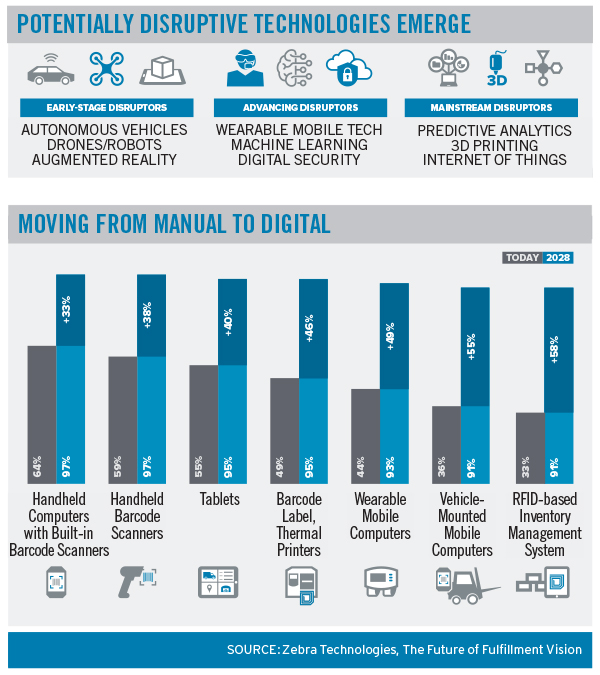Turn Up the Volume on Omnichannel Fulfillment

Customers are changing the way manufacturers, transportation and logistics firms, and retailers operate, finds the Future of Fulfillment Vision Study conducted by Zebra Technologies with research partner Qualtrics.
Among the study’s key findings are these three factors to consider when preparing your company for omnichannel fulfillment:
Omnichannel is difficult to attain.
If you feel like you haven’t quite "gotten there," you aren’t alone. Only 39 percent of respondents report operating at an omnichannel level, and 59 percent are still in the process of planning their omnichannel strategy.
Supply chain decision makers are streamlining fulfillment.
Currently, 55 percent of respondents use paper and pen to manage omnichannel logistics, and respondents estimate their current inventories are 66-percent accurate. In order to increase accuracy, most decision makers are planning a shift to mobile computers with barcode scanners in two to three years (see chart). Additionally, only about 50 percent of logistics companies currently use demand forecast planning and labor workforce management, but that number is expected to increase to nearly 97 percent by 2028.
Roles are changing and companies are increasing collaboration.
No longer are retail companies, logistics companies, and manufacturers three separate entities. More and more, merchants are "shipping from store" and using store inventory to fulfill online orders. And suppliers are drop-shipping directly to individual customers, which changes their processes. Thirty-two percent of retailers request drop ship, and manufacturers expect this to increase to 10 percent in the next five years. Meanwhile, logistics companies are experimenting with new approaches such as semi-autonomous and autonomous ground vehicles, drones, droids, and dedicated delivery people.
